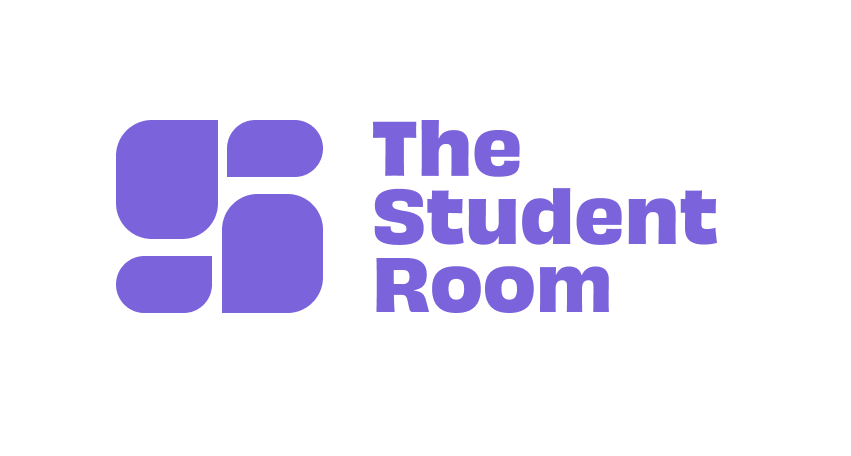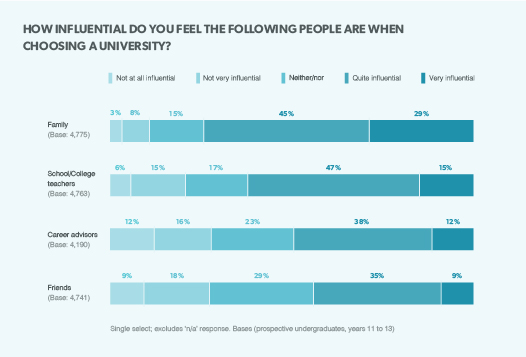For our sixth annual Options report, we surveyed over 10,000 students and discovered interesting findings about the influential advice and information sources that impact pathway decision-making.
This article explores how students research their options, the significant people and support sources to take into consideration and what this means for higher education marketers.
PARENTS AND FAMILY MEMBERS ARE KEY INFLUENCERS THROUGHOUT THE JOURNEY
Parents and family members were key influencers throughout the student journey, regardless of pathway or background, their influence remains high from year 11 all the way to graduate employment.
We found although 74% of prospective undergraduate students stated family were very or quite influential when choosing a university, not all parents who have been to university are pushing that route onto their children. The highest proportion (23%) of prospective apprentices said a parent had the biggest influence on their pathway choice and this increased to 32% when parents had both been to university.
This opens the field up for marketers to consider how they communicate to parents. As you know, many will assist with researching options and attend open days with their children, so utilise the open day window to engage parents and get them on your side, check out our top tips to engage parents at open days and maximise conversions.
TEACHERS INFLUENCE
The earlier the student in their decision-making process, the higher influence teachers and career advisors had on their decision-making. 74% of year 11 respondents stated school/college teachers were very or quite influential when choosing a university, compared to 53% of year 13’s.
This calls for universities to start engagement in schools earlier and utilise the influence of teachers for your recruitment strategy. Earlier this year we asked 1,000 students about their experience of university advice in schools and found only 17% started receiving advice and guidance in year 11. So, why not reach out to schools or get involved with programmes that encourage early engagement and teacher involvement.
PRINT ISN’T DEAD
Respondents generally used a wide range of information sources to research their pathway options. Unsurprisingly top information source remains university websites used by 95% of respondents alongside other websites like The Student Room (86%) and UCAS (89%).
Although intangible online sources were most widely used when choosing a university, printed prospectuses were still being used by the majority. Almost all Year 13 respondents (93%) had used printed prospectuses, overtaking online prospectuses which was lower at 89%.

The data above demonstrates which information sources were most useful:
- Getting a feel for a university at an open was by far the most useful information source with 95% of those who had visited one finding it very or quite useful
- Websites were also seen as useful by a majority of respondents
- 77% stated printed prospectuses were very or quite useful, which came out less than most online sources
Having a healthy mix of channels is the key here. Investing in print is still necessary as they provide a tangible link to the university applicants are considering and provides students with something to take home, share with their parents and be proud of.
Consider all the channels and sources you use and ensure your campaign presence is evident not only via your own website but across a variety of trusted third parties that can ensure your message reaches and influences an untapped audience of undecided students.
Interested to find out more from Options? Look out for our next piece of this series, which explores students’ pathway choices and reasons behind those as well as perceptions of apprenticeships.
If you’d like to read the full report download your free copy here.


